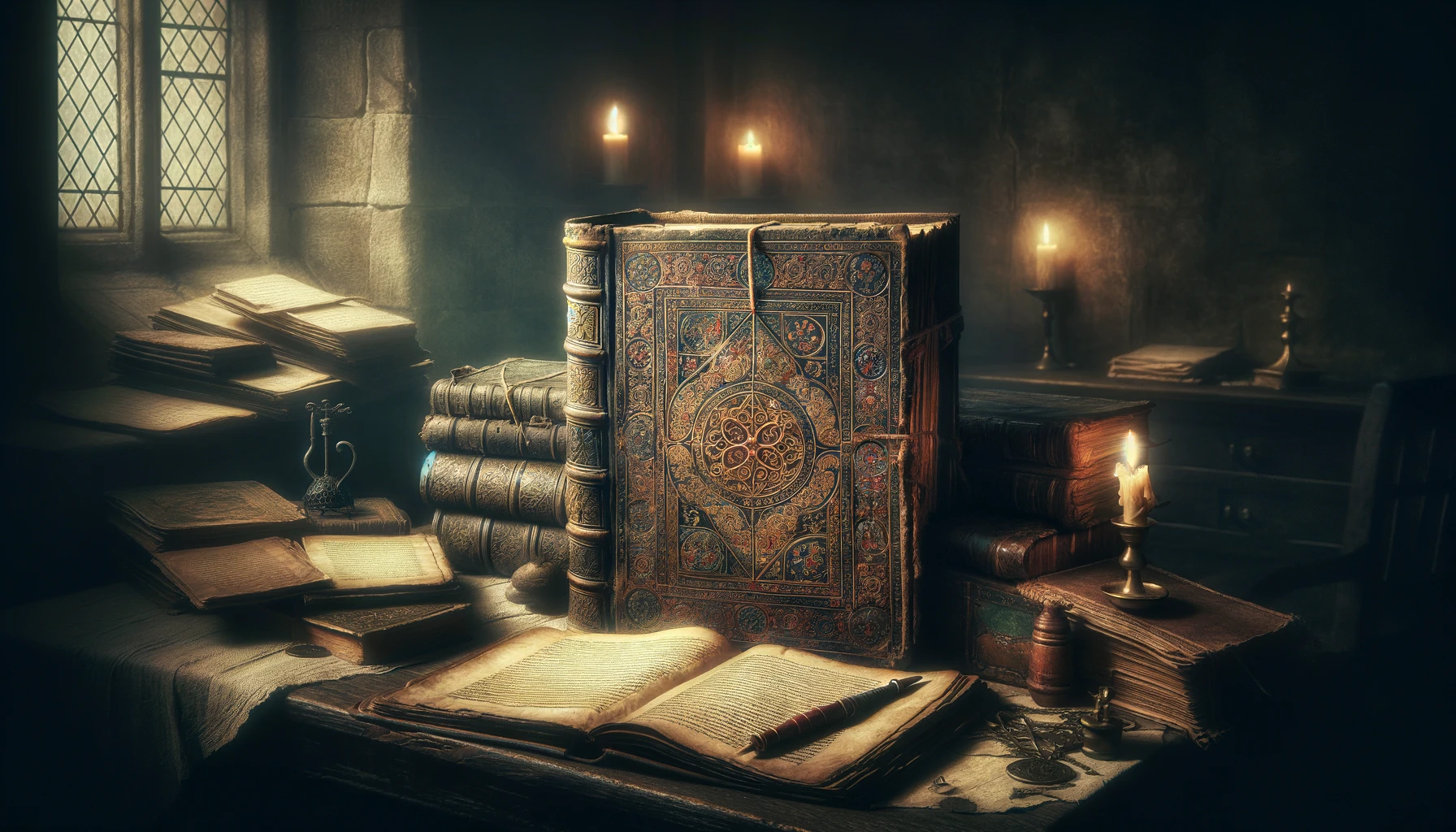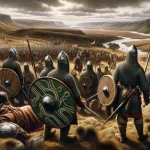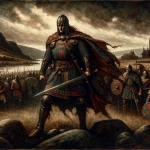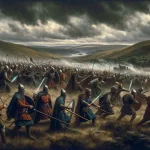The Llyfr Aneirin (The Book of Aneirin) is a Welsh manuscript from the late 13th century, housed at the National Library of Wales in Aberystwyth. It contains poetry in both Old and Middle Welsh, traditionally attributed to Aneirin, a poet from the late 6th century who is thought to have lived in what is now Scotland. It is is one of the Four Ancient Books of Wales. Historically, it may testify to the former existence of Welsh-speaking peoples beyond the territory that we recognise today as Wales, during the post-Roman period.
Who was Aneirin?
Aneirin was a contemporary of Taliesin and Myrddin and lived around 600 AD. He was mentioned by Nennius under the name “Neirin” from the alternate spelling “Aneirin” in the 9th century in Historia Britonum. Aneirin was a poet at Urien’s court and was present ca. 600 AD at the battle of Cattraith (probably Catterick in Yorkshire). On this which he wrote his epic poem Y Gododdin, about the defeat of the Britons against the Saxons.
What does the Book of Aneirin look Like?
Crafted from parchment and penned around 1265, likely in a Welsh monastery, this manuscript is believed to be a copy of an earlier, 9th-century version that has since been lost. The text is written in a proto-gothic script, with minimal decoration except for a few coloured Lombardic capitals, coloured pilcrows to break paragraphs, and simple linear termini to denote text breaks.
You can view a copy of the book at the National Library of Wales.
Who compiled the manuscript?
This manuscript, a parchment book penned in Wales between 1250 and 1300, exemplifies the monastic writing traditions of the period. Likely written by monks in a monastery, it represents a collaborative effort between two scribes. The first monk was engaged in transcribing an older text, originally composed sometime between the late 8th and late 11th centuries. The second monk contributed by copying a version of the text from a slightly later period and added four new poems to the compilation.
The handiwork of the first scribe is identifiable in two other Welsh manuscripts, Peniarth MSS 14 and 17, which are currently housed at the National Library of Wales. This suggests a continuity or shared tradition among the scribes working in Wales during this time.
In terms of aesthetics, the manuscript exhibits a restrained approach to decoration. The primary embellishments consist of initial letters colored in red and blue-green, a common stylistic feature in manuscripts of that era. This limited use of decoration focuses attention on the textual content, reflective of the manuscript’s primary purpose as a vehicle for preserving and transmitting literary and possibly religious texts.
What does the tales does Book of Aneirin contain?
The Gododin: Book of Aneurin I
The poetry within, spanning just 38 pages, includes the renowned Y Gododdin, a poem in early Welsh that honours the Gododdin warriors (from modern Lothian, Scotland) who perished at the Battle of Catraeth (likely present-day Catterick, North Yorkshire) around 600 AD. Some parts of this poem are believed to be contemporaneous with Aneirin, who might have survived the battle. The poem vividly describes military exploits.
The Gorchan of Tudvwich: Book of Aneurin II
The “Gwarchan Tudfwlch” is one of the series of “Gwarchanau,” a collection of ancient Welsh short story-poems. Often these poems, composed in a style that mixes historical and legendary elements, were likely intended to praise and inspire warriors. The “Gwarchan Tudfwlch,” is a heroic poem that focuses on the character Tudfwlch.
The Gwarchan of Adebon: Book of Aneurin III
A literal translation of the The Gwarchan of Adebon discloses nothing more than a string of very harmless proverbs, which from the concluding lines it would appear were recited before an audience by some wandering minstrel.
The Gorchan of Cynvelyn: Book of Aneurin IV
The “Gwarchan Cynvelyn” is another “Gwarchanau,” praising the warrior Cynvelyn, who also fought in the Battle of Catraeth.
The Gwarchan of Maelderw: Book of Aneurin V
The “Gwarchan Maelderw” is another “Gwarchanau,” praising the warrior Maelderw.
Dinogad’s Smock
It is thought that this poem was incorrectly inserted into the marginalia of the manuscript and a later copyist mistakenly believed it to form part of Y Gododdin and interpolated it into the text. The 17-line poem is dedicated to the infant Dinogad, swathed in a luxurious marten-skin garment in his crib, highlighting the adventurous hunting exploits of his father. The poem initially focuses on the smock, a type of long garment typically worn by babies, before transitioning to a recount of the various animals previously hunted by Dinogad’s father. It emphasizes the skillful and heroic methods he employed in hunting and portrays him as a proficient hunter. The fact that Dinogad is adorned in a marten-skin smock, a highly prized item, implies that his father was a figure of significant stature, further evidenced by references to his ownership of at least eight slaves.






